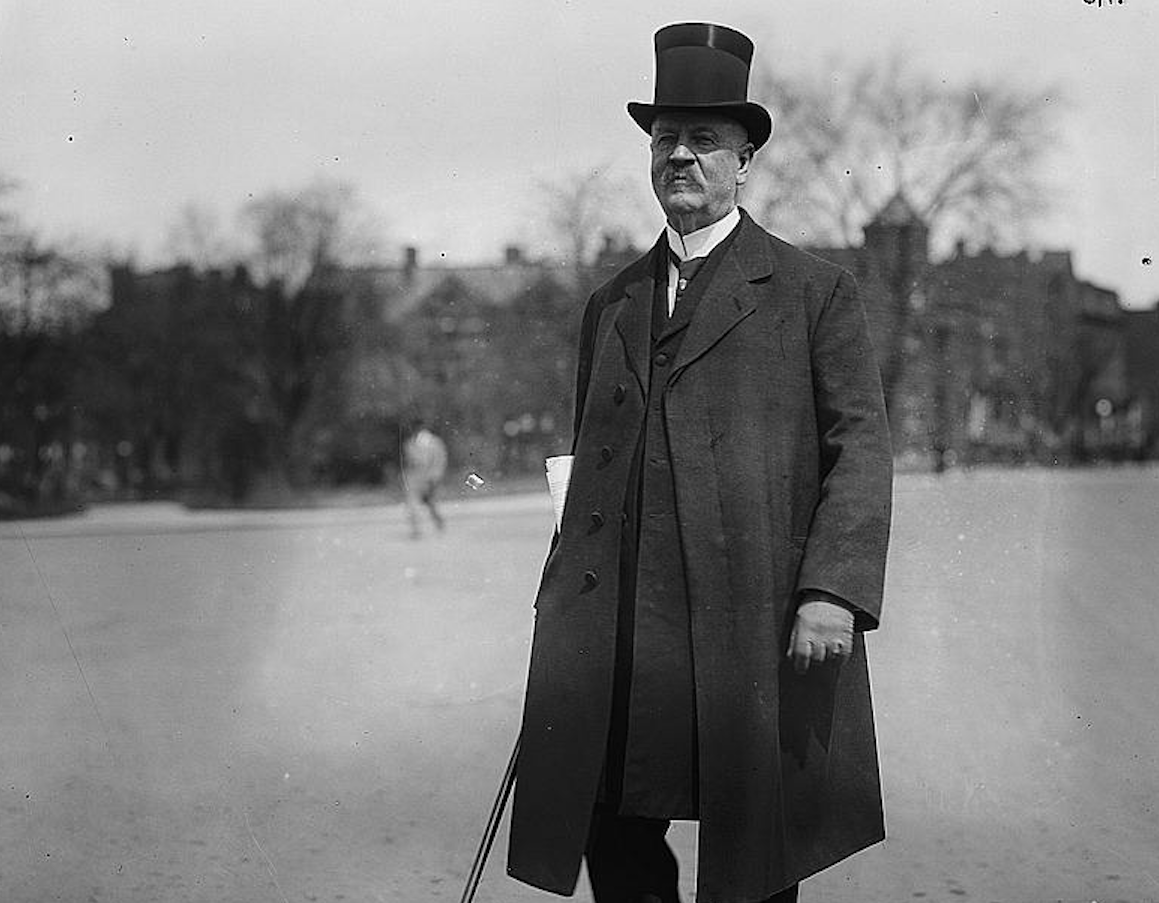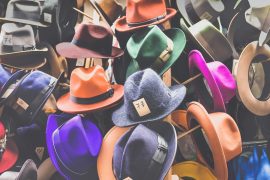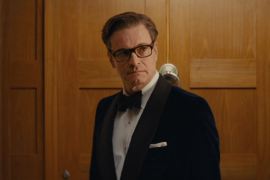How do you dress correctly for the occasion? Somehow it seems as if the art of dressing has been forgotten among many nowadays. If we look back to the beginning of the last century knowing how to dress according to the occasion was an important part of being a Gentleman. Nowadays, of course, the etiquette rules regarding many occasions have become more relaxed. However, we still every now and then face situations in our lives were are unsure about how to dress.
For the interested it isn’t as hard as you could imagine to pick up some hints on how to dress. A sense for style can obviously not be bought and neither is it easy to acquire it just by reading. But with a little help from etiquette experts you can at least learn the basics from which to improvise in your own style. There are some really good etiquette experts nowadays, but no one has yet managed to get the same kind of status as Emily Post among the etiquette experts of today. Maybe it’s because these things were more important among previous generations, maybe it’s something else.
Regardless of the reasons, Emily Post is definitely a person to turn to when it comes to etiquette rules and how to behave in different situations. Emily Post (1872-1960) was an American author, whose name has become synonymous, at least in North America, with proper etiquette and manners. More than half a century after her death, her name is still used in titles of etiquette books.
Her best known publication is the book Etiquette in Society, in Business, in Politics and at Home. A book that was released in year 1922 and still is used as a reference in many books about etiquette rules. Below your find an excerpt from the book and the chapter about The Clothes of a Gentleman.
CHAPTER XXXIV
From the book ETIQUETTE IN SOCIETY, IN BUSINESS, IN POLITICS AND AT HOME by Emily Post (1922)
THE CLOTHES OF A GENTLEMAN
It would seem that some of our great clothing establishments, with an eye to our polyglot ancestry, have attempted to incorporate some feature of every European national costume into a “harmonious” whole, and have thus given us that abiding horror, the freak American suit. You will see it everywhere, on Broadway of every city and Main Street of every town, on the boardwalks and beaches of coast resorts, and even in remote farming villages. It comes up to hit you in the face year after year in all its amazing variations: waist-line under the arm pits, “trick” little belts, what-nots in the cuffs; trousers so narrow you fear they will burst before your eyes, pockets placed in every position, buttons clustered together in a tight little row or reduced to one. And the worst of it is, few of our younger men know any better until they go abroad and find their wardrobe a subject for jest and derision.
If you would dress like a gentleman, you must do one of two things; either study the subject of a gentleman’s wardrobe until you are competent to pick out good suits from freaks and direct your misguided tailor, or, at least until your perceptions are trained, go to an English one. This latter method is the easiest, and, by all odds, the safest. It is not Anglomania but plain common sense to admit that, just as the Rue de la Paix in Paris is the fountainhead of fashions for women, Bond Street in London is the home of irreproachable clothes for men.
And yet, curiously enough, just as a woman shopping in Paris can buy frightful clothes—or the most beautiful; a man can in America buy the worst clothes in the world—and the best.
The ordinary run of English clothes may not be especially good, but they are, on the other hand, never bad; whereas American freak clothes are distortions like the reflections seen in the convex and concave mirrors of the amusement parks. But not even the leading tailors of Bond Street can excel the supremely good American tailor—whose clothes however are identical in every particular with those of London, and their right to be called “best” is for greater perfection of workmanship and fit. This last is a dangerous phrase; “fit” means perfect set and line, not plaster tightness.
However, let us suppose that you are either young, or at least fairly young; that you have unquestioned social position, and that you are going to get yourself an entire wardrobe. Let us also suppose your money is not unlimited, so that it may also be seen where you may not, or may if necessary, economize.
Formal Evening Clothes
Your full dress is the last thing to economize on. It must be perfect in fit, cut and material, and this means a first-rate tailor. It must be made of a dull-faced worsted, either black or night blue, on no account of broadcloth. Aside from satin facing and collar, which can have lapels or be cut shawl-shaped, and wide braid on the trousers, it must have no trimming whatever. Avoid satin or velvet cuffs, moiré neck ribbons and fancy coat buttons as you would the plague.
Wear a plain white linen waistcoat, not one of cream colored silk, or figured or even black brocade. Have all your linen faultlessly clean—always—and your tie of plain white lawn, tied so it will not only stay in place but look as though nothing short of a backward somersault could disarrange it.
Your handkerchief must be white; gloves (at opera or ball) white; flower in buttonhole (if any) white. If you are a normal size, you can in America buy inexpensive shirts, and white waistcoats that are above reproach, but if you are abnormally tall or otherwise an “out size” so that everything has to be “made to order,” you will have to pay anywhere from double to four times as much for each article you put on.
When you go out on the street, wear an English silk hat, not one of the taper crowned variety popular in the “movies.” And wear it on your head, not on the back of your neck. Have your overcoat of plain black or dark blue material, for you must wear an overcoat with full dress even in summer. Use a plain white or black and white muffler. Colored ones are impossible. Wear white buckskin gloves if you can afford them; otherwise gray or khaki doeskin, and leave them in your overcoat pocket. Your stick should be of plain Malacca or other wood, with either a crooked or straight handle. The only ornamentation allowable is a plain silver or gold band, or top; but perfectly plain is best form.
And lastly, wear patent leather pumps, shoes or ties, and plain black silk socks, and leave your rubbers—if you must wear them, in the coat room.
The Tuxedo
The Tuxedo, which is the essential evening dress of a gentleman, is simply the English dinner coat. It was first introduced in this country at the Tuxedo Club to provide something less formal than the swallow-tail, and the name has clung ever since. To a man who can not afford to get two suits of evening clothes, the Tuxedo is of greater importance. It is worn every evening and nearly everywhere, whereas the tail coat is necessary only at balls, formal dinners, and in a box at the opera. Tuxedo clothes are made of the same materials and differ from full dress ones in only three particulars: the cut of the coat, the braid on the trousers, and the use of a black tie instead of a white one. The dinner coat has no tails and is cut like a sack suit except that it is held closed in front by one button at the waist line. (A full dress coat, naturally, hangs open.) The lapels are satin faced, and the collar left in cloth, or if it is shawl-shaped the whole collar is of satin.
The trousers are identical with full dress ones except that braid, if used at all, should be narrow. “Cuffed” trousers are not good form, nor should a dinner coat be double-breasted.
Fancy ties are bad form. Choose a plain black silk or satin one. Wear a white waistcoat if you can afford the strain on your laundry bill, otherwise a plain black one. By no means wear a gray one nor a gray tie.
The smartest hat for town wear is an opera, but a straw or felt which is proper in the country, is not out of place in town. Otherwise, in the street the accessories are the same as those already given under the previous heading.
The House Suit
The house suit is an extravagance that may be avoided, and an “old” Tuxedo suit worn instead.
A gentleman is always supposed to change his clothes for dinner, whether he is going out or dining at home alone or with his family, and for this latter occasion some inspired person evolved the house, or lounge, suit, which is simply a dinner coat and trousers cut somewhat looser than ordinary evening ones, made of an all-silk or silk and wool fabric in some dark color, and lined with either satin or silk. Nothing more comfortable—or luxurious—could be devised for sitting in a deep easy-chair after dinner, in a reclining position that is ruinous to best evening clothes.
Its purpose is really to save wear on evening clothes, and to avoid some of their discomfort also, because they can not be given hard or careless usage and long survive. A house suit is distinctly what the name implies, and is not an appropriate garment to wear out for dinner or to receive any but intimate guests in at home. The accessories are a pleated shirt, with turndown stiff collar, and black bow tie, or even an unstarched shirt with collar attached (white of course). The coat is made with two buttons instead of one, because no waistcoat is worn with it.
Formal afternoon dress consists of a black cutaway coat with white piqué or black cloth waistcoat, and gray-and-black striped trousers. The coat may be bound with braid, or, even in better taste, plain. A satin-faced lapel is not conservative on a cutaway, but it is the correct facing for the more formal (and elderly) frock coat. Either a cutaway or a frock coat is always accompanied by a silk hat, and best worn with plain black waistcoat and a black bow tie or a black and white four-in-hand tie. A gray silk ascot worn with the frock coat is supposed to be the correct wedding garment of the bride’s father. (For details of clothes worn by groom and ushers at a wedding, see chapter on weddings.)
Shoes may be patent leather, although black calfskin are at present the fashion, either with or without spats. If with spats, be sure that they fit close; nothing is worse than a wrinkled spat or one that sticks out over the instep like the opened bill of a duck!
Though gray cutaway suits and gray top hats have always been worn to the races in England, they do not seem suitable here, as races in America are not such full-dress occasions as in France and England. But at a spring wedding or other formal occasions a sand-colored double-breasted linen waistcoat with spats and bow tie to match looks very well with a black cutaway and almost black trousers, on a man who is young.
The Business Suit
The business suit or three-piece sack is made or marred by its cut alone. It is supposed to be an every-day inconspicuous garment and should be. A few rules to follow are:
Don’t choose striking patterns of materials; suitable woolen stuffs come in endless variety, and any which look plain at a short distance are “safe,” though they may show a mixture of colors or pattern when viewed closely.
Don’t get too light a blue, too bright a green, or anything suggesting a horse blanket. At the present moment trousers are made with a cuff; sleeves are not. Lapels are moderately small. Padded shoulders are an abomination. Peg-topped trousers equally bad. If you must be eccentric, save your efforts for the next fancy dress ball, where you may wear what you please, but in your business clothing be reasonable.
Above everything, don’t wear white socks, and don’t cover yourself with chains, fobs, scarf pins, lodge emblems, etc., and don’t wear “horsey” shirts and neckties. You will only make a bad impression on every one you meet. The clothes of a gentleman are always conservative; and it is safe to avoid everything than can possibly come under the heading of “novelty.”
Jewelry
In your jewelry let diamonds be conspicuous by their absence. Nothing is more vulgar than a display of “ice” on a man’s shirt front, or on his fingers.
There is a good deal of jewelry that a gentleman may be allowed to wear, but it must be chosen with discrimination. Pearl shirt-studs (real ones) are correct for full dress only, and not to be worn with a dinner coat unless they are so small as to be entirely inconspicuous. Otherwise you may wear enamel studs (that look like white linen) or black onyx with a rim of platinum, or with a very inconspicuous pattern in diamond chips, but so tiny that they can not be told from a threadlike design in platinum—or others equally moderate.
Waistcoat buttons, studs and cuff links, worn in sets, is an American custom that is permissible. Both waistcoat buttons and cuff links may be jewelled and valuable, but they must not have big precious stones or be conspicuous.
A watch chain should be very thin and a man’s ring is usually a seal ring of plain gold or a dark stone. If a man wears a jewel at all it should be sunk into a plain “gypsy hoop” setting that has no ornamentation, and worn on his “little,” not his third, finger.
Gay-colored socks and ties are quite appropriate with flannels or golf tweeds. Only in your riding clothes you must again be conservative. If you can get boots built on English lines, wear them; otherwise wear leggings. And remember that all leather must be real leather in the first place and polished until its surface is like glass.
Have your breeches fit you. The coat is less important, in fact, any odd coat will do. Your legs are the cynosure of attention in riding.
Most men in the country wear knickerbockers with golf stockings, with a sack or a belted or a semi-belted coat, and in any variety of homespuns or tweeds or rough worsted materials. Or they wear long trousered flannels. Coats are of the polo or ulster variety. For golf or tennis many men wear sweater coats. Shirts are of cheviot or silk or flannel, all with soft collars attached and to match.
The main thing is to dress appropriately. If you are going to play golf, wear golf clothes; if tennis, wear flannels. Do not wear a yachting cap ashore unless you are living on board a yacht.
White woolen socks are correct with white buckskin shoes in the country, but not in town.
If some semi-formal occasion comes up, such as a country tea, the time-worn conservative blue coat with white flannel trousers is perennially good.
Other Hints
The well-dressed man is always a paradox. He must look as though he gave his clothes no thought and as though literally they grew on him like a dog’s fur, and yet he must be perfectly groomed. He must be close-shaved and have his hair cut and his nails in good order (not too polished). His linen must always be immaculate, his clothes “in press,” his shoes perfectly “done.” His brown shoes must shine like old mahogany, and his white buckskin must be whitened and polished like a prize bull terrier at a bench show. Ties and socks and handkerchief may go together, but too perfect a match betrays an effort for “effect” which is always bad.
The well-dressed man never wears the same suit or the same pair of shoes two days running. He may have only two suits, but he wears them alternately; if he has four suits he should wear each every fourth day. The longer time they have “to recover” their shape, the better.
What To Wear On Various Occasions
The appropriate clothes for various occasions are given below. If ever in doubt what to wear, the best rule is to err on the side of informality. Thus, if you are not sure whether to put on your dress suit or your Tuxedo, wear the latter.
Full Dress
- At the opera.
- At an evening wedding.
- At a dinner to which the invitations are worded in the third person.
- At a ball, or formal evening entertainment.
- At certain State functions on the Continent of Europe in broad daylight.
Tuxedo
- At the theater.
- At most dinners.
- At informal parties.
- Dining at home.
- Dining in a restaurant.
A Cutaway Or Frock Coat With Striped Trousers
- At a noon or afternoon wedding.
- On Sunday for church (in the city).
- At any formal daytime function.
- In England to business.
- As usher at a wedding.
- As pall-bearer.
- All informal daytime occasions.
- Traveling.
- The coat of a blue suit with white flannel or duck trousers for a lunch, or to church, in the country.
- A blue or black sack suit will do in place of a cutaway at a wedding, but not if you are the groom or an usher.
Country Clothes
- Only in the country.
To wear odd tweed coats and flannel trousers in town is not only inappropriate, but bad taste.









